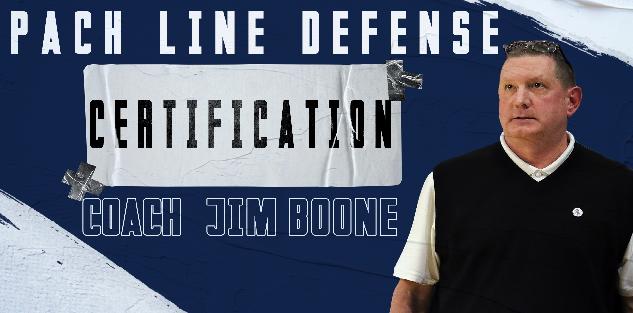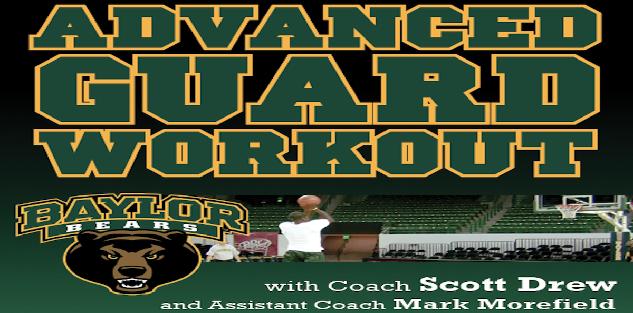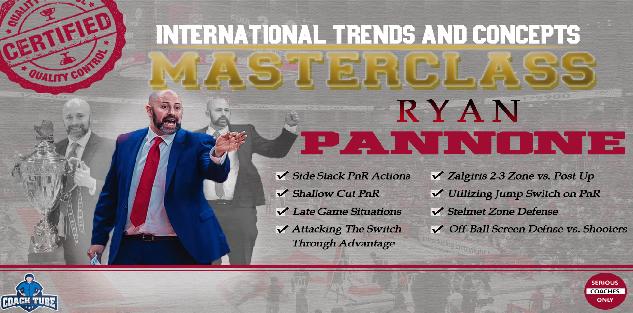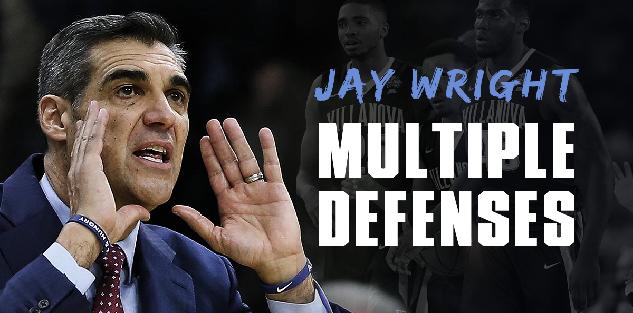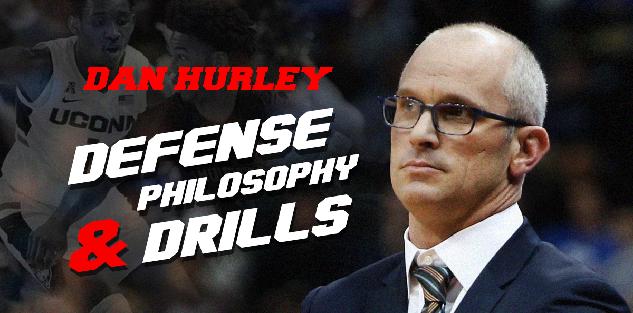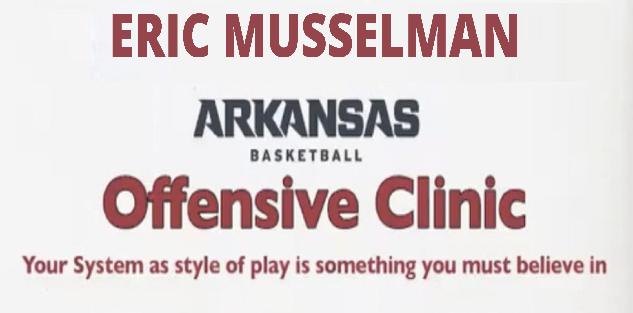Featured courses
- Two Great Game Situational Workouts For the Basketball Offseason by Grant Young
- Two Reads Basketball Players Must Understand Before Executing the Ball-Screen by Grant Young
- Two of LSU Coach Kim Mulkey’s Game-Winning Inbounds Plays by Grant Young
- Three Effective Early-Season Defensive Basketball Drills by Grant Young
- Four Essential Tips For Basketball’s 1-3-1 Zone Defense by Grant Young
- Four Zone Defense Drills to Strengthen Your Team by Grant Young
- How to Beat the Three Most Common Pick and Roll Coverages by Grant Young
- Two Drills to Improve Shooting at the Start of the Basketball Season by Grant Young
- Core Basketball Principles That Dallas Mavericks Coach Sean Sweeney Teaches by Grant Young
- Three Competitive Shooting Drills For Your Basketball Team by Grant Young
- How To Teach The ‘I’ Generation of Basketball Players by Grant Young
- Three Elite Drills to Begin a Basketball Practice With by Grant Young
- How to Build a Championship-Winning Basketball Team Culture by Grant Young
- Two of Texas Women’s Basketball Coach Vic Schaefer’s Tips For Team Culture by Grant Young
- Atlanta Dream WNBA Coach Brandi Poole’s Four Sets for Secondary Offense by Grant Young
- NC State Basketball Coach Brett Nelson’s 4 Crucial Point Guard Qualities by Grant Young
- Kentucky Coach Mark Pope’s Five Guard Rules For Offense by Grant Young
- McNeese State Basketball Coach Will Wade’s 4 Core Pillars by Grant Young
- 4 Tips To Instantly Improve Your Free Throw Shooting by Tyler Linderman
- Assemble a Championship-Caliber Basketball Rotation by Brandon Ogle
- Two of UConn Coach Dan Hurley’s Key Defensive Drills by Grant Young
- Four Post Moves All Basketball Forwards Should Have In Their Bag by Grant Young
- Four of Baylor Coach Nicki Collen’s Midseason Pick and Roll Adjustments by Grant Young
- WNBA Legend Sue Bird’s Two Tips For Attacking on Offense by Grant Young
- Houston Coach Kelvin Sampson’s Three Keys for Building a Basketball Program by Grant Young
- Two of Tom Izzo’s Top Michigan State Defensive Drills by Grant Young
- Four of Olympic Gold Medalist Coach Mechelle Freeman’s Relay Race Strategies by Grant Young
- Three Key Strategies Will Wade Uses to Build a Dominant Team by William Markey
- Five UConn Huskies Men’s Basketball Plays That You Can Use by Grant Young
- Three Tips for Maintaining Team Culture at the End of a Basketball Season by Grant Young
- Three Dribble Drive Motion Drills to Teach Your Basketball Team by Grant Young
- Three Dribbling Drills For Non-Primary Ball Handlers by Grant Young
- Four Advanced Ball Handling Drills For Basketball Guards by Grant Young
- Three Tips to Sharpen Your Post Player’s Footwork in Basketball by Grant Young
- These Three Pick and Roll Drills Are Crucial For Any Ball Screen Offense by Grant Young
- Three Closeout Drills to Improve Basketball Shooting Defense by Grant Young
- Three Tips to Perfect the Packline Defense in Basketball by Grant Young
- Four Keys to Executing the Read and React Offense in Basketball by Grant Young
- Three Tips to Develop Elite Basketball Shooters by Grant Young
- Three Crucial Keys to Executing the 5 Out Offense in Basketball by Grant Young
- These Three Offensive Sets Will Help You Beat Any Zone Defense by Grant Young
- Three Transition Basketball Drills To Play With More Pace by Grant Young
- Three 5 Out Offense Drills Any Basketball Coach Can Use by Grant Young
- Four Vital Techniques for a Motion Offense in Basketball by Grant Young
- Three Baseline Inbounds Plays To Win Your Basketball Team Games by Grant Young
- Four Drills For Sharpening the European Ball Screen Offense by Grant Young
- Three Positioning Tricks For a Basketball Zone Offense by Grant Young
- Three Rules to Perfecting Basketball's Lock Left Defensive System by Grant Young
- UCLA WBB Coach Cori Close’s Two Keys to Winning the Mental Game by Grant Young
- Four of Alabama Coach Nate Oats’ Favorite Basketball Drills by Grant Young
- Three Ways To Turn Transition Offense in Basketball Into Points by Grant Young
- Three Drills to Master Basketball's Pack Line Defense by Grant Young
- Three Transition Defense Drills to Halt Fast Breaks by Grant Young
- Four Offensive Rebounding Drills to Win Second Possessions by Grant Young
- 4 Defensive Technique Drills from Boston Celtics Assistant Coach Brandon Bailey by Marek Hulva
- 5 Drills to Improve Ball Handling by Tyler Linderman
- 13 FUNNY BASKETBALL GIFS by Alex
- BASKETBALL SPEED AND AGILITY: 8 QUESTIONS FOR COACHTUBE EXPERT RICH STONER by Jaycob Ammerman
- Defensive Strategies for Basketball by Ryan Brennan
- 4 Keys To Turning Your Program Into Championship Contender By Dallas Mavericks Coach Sean Sweeney by Marek Hulva
- 5 Components to Creating a Winning Basketball Program by Justin Tran
- Guide to Becoming a Lethal Scorer in Basketball by Justin Tran
- Zone Defense In the NBA Eastern Conference Finals by James Locke
- Mastering Court Mobility: Tips for Effective Movement in Basketball by Justin Tran
- 5 Basketball Shooting Drills: How to Develop a Sharpshooter by James Locke
- 6 Points of Emphasis for a Successful 5 Out Offense by Jaycob Ammerman
- Effective and Efficient Methods to Practice During the Basketball Season by Justin Tran
- Three Great Passing Drills From a Basketball Coaching Legend by Grant Young
- 7 Principles For Perfecting the Princeton Offense in Basketball by Grant Young
- How to Replicate A Modern NBA Offense by Grant Young
- Three Great Two-Ball Dribbling Drills For Basketball Development by Grant Young
- Two Rebounding Drills to Win Your Basketball Team Championships by Grant Young
- How to Improve Your Basketball Team’s Defense With the Shell Drill by Grant Young
- How Baylor Basketball’s Scott Drew Develops Elite Guard Play by Grant Young
- Off-Ball Movement Tips and Strategies: Lessons From the NBA Finals by James Locke
- Player Development: Scott Drew’s Tips for Producing NBA Guards by James Locke
- How to Execute a Spread Offense in Basketball by Grant Young
- Four Quality Quotes From Four Final Four Coaches by Grant Young
- A Guide to the Pack Line Defense by Alex Martinez
- 3 Defensive Build Up Drills to Improve Team Basketball Defense by Grant Young
- Battle of Two Great Coaches: Best Plays from the NBA Finals Contenders by Justin Tran
- 10 Creative Ways Athletic Programs Can Use a Video Board to Raise Money by Coach Williams
- How to Use 3 on 3 to Improve Your Basketball Team by Grant Young
- How to Defend the Pick and Roll by Grant Young
- Mastering Basketball Defense: Techniques, Drills, and Strategies for Success by Justin Tran
- Three Tips From The Coach Who Developed Giannis Antetokoumnpo by Grant Young
- 2023 NBA Draft: Skills and Technique from Top Prospects by Justin Tran
- From College to the Pros: Transitioning the Dribble Drive Offense by Justin Tran
- Positionless Basketball: Redefining Roles on the Court by Justin Tran
- Revolutionize Your Offense: Proven Concepts to Elevate Your Basketball Game by Justin Tran
- 5 Essential Fastbreak Drills Every Basketball Coach Should Know by James Locke
- How to Run a Circle Offense in Basketball by Grant Young
- Game-Changing Strategies: ATO Plays in the EuroLeague and Olympics by Justin Tran
- How to Stand Out at Basketball Tryouts by Grant Young
- How to Improve Your Basketball Team’s Transition Defense by Grant Young
- Indiana Fever GM Lin Dunn’s Two Keys For Women’s Basketball Coaches by Grant Young
- Strength Training Strategies Every Basketball Player Should Have by Grant Young
- A WNBA Basketball Coach’s Four Priorities In Transition Defense by Grant Young
- Three Adjustments to Make When Your Basketball Offense Isn’t Working by Grant Young
- Three Pillars to Applying Defensive Pressure on the Basketball Court by Grant Young
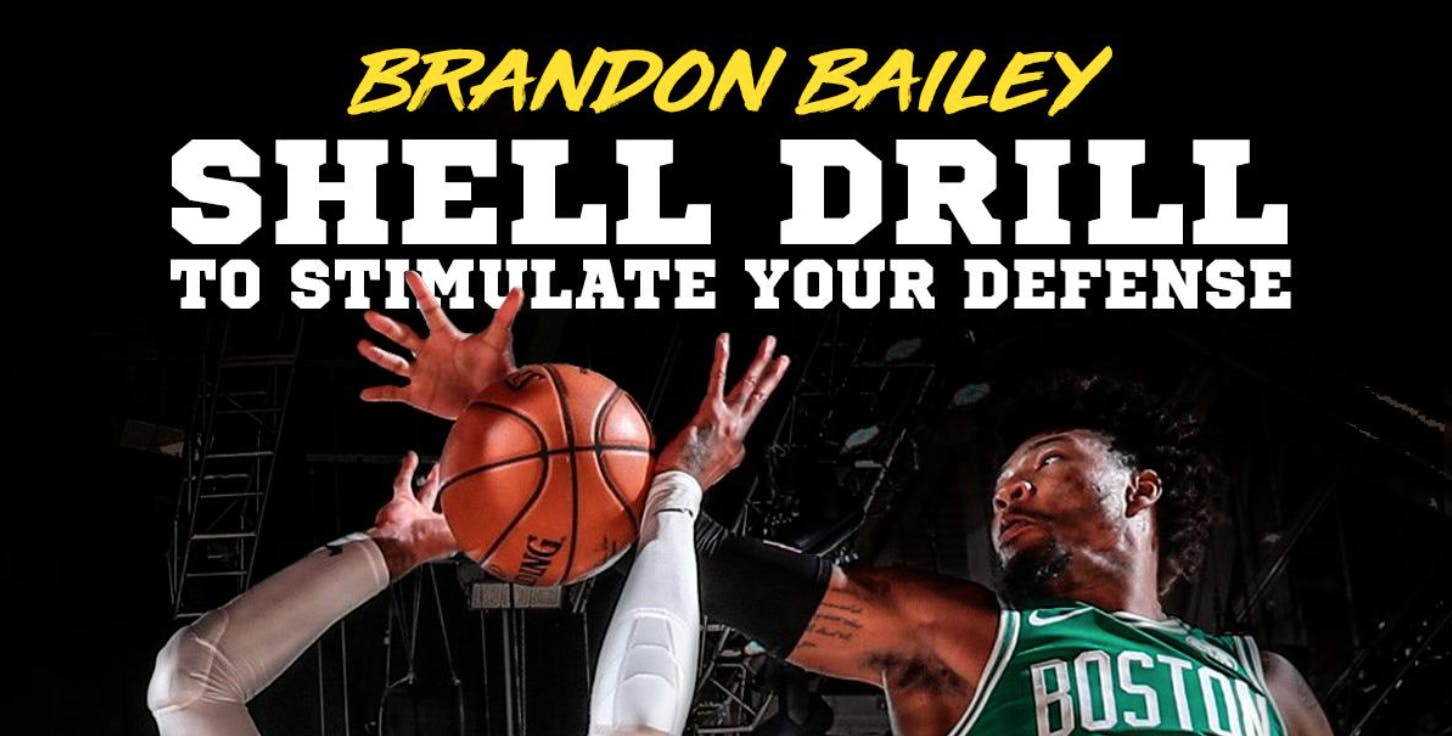
How to Improve Your Basketball Team’s Defense With the Shell Drill
- By Grant Young
Even if a basketball team has an elite array of offensive weapons at their disposal, no squad can expect to consistently win if they don’t have a solid defensive foundation.
And defense can be tough to teach players; especially at the game’s higher levels, where most teams are reliant on man coverage in order to slow down opposing offenses.
Hence why drills are a great way to instill defensive strategies and philosophies within a defense. And Brandon Bailey has the perfect drill that any coach can use for their own team’s benefit.
Coach Brandon Bailey is currently the head men’s basketball coach at DePaul University. Prior to that, Coach Bailey was an assistant coach at Ohio State University and an assistant coach for the Boston Celtics, who recently won the 2023-24 NBA Championship.
After beginning his career as a video intern with the Celtics in 2011, Coach Bailey rose through the Celtics’ coaching ranks to ultimately earn himself an assistant coaching position. And the defensive that he has sworn by throughout this ascension is called the Shell Drill.
In his ‘Shell Drill To Stimulate Your Defense’ course, Coach Bailey details the best ways you can utilize this drill to turn your defensive unit from a liability to one of your team’s strongest assets.
3 on 3 Shell - RIM Protection
In a 3 on 3 version of the shell drill, Coach Bailey wants to start by positioning his three offensive players in the drill: one player in one of the corners, another player at the perimeter on the wing (who starts with the ball), and a third player on the other wing opposite him.
Once his offensive players are placed into these three positions, he will place three defenders guarding them, all of whom are a few feet away in a natural defensive position.
Coach Bailey’s goal is to create/simulate scenarios and reads that his players will have to deal with in the game. One example of this has to do with rim protection. Specifically, Coach Bailey wants his players to get reads on when to inch out and guard a player along the perimeter compared to when his players should remain closer to the paint, to assist with rim protection.
So the drill would start with the player who’s holding the ball passing it to the other wing. That player would then attack the point. If they succeed and make it past their defender, the player defending the offensive player at the corner then must decide whether to stop that player’s drive or remain on their player in the corner.
Coach Bailey stresses that, as soon as this help side defender can see that the guy driving’s shoulders are past their initial defender, he will need to abandon his player in the corner to stop an easy layup.
But if the initial defender manages to stay in front of the guy driving, then the help side defender should remain close enough to their guy in the corner so that they don’t have an easy shot.
The 3 on 3 shell drill is perfect for practicing these scenarios because the court isn’t congested, and guys can see the consequences of their reads.
Square Shell

A second version of the shell drill that Coach Bailey swears by is what he calls the square shell.
This drill involved positioning four offensive players: one in the corner, a forward or center along the baseline, a third player along the perimeter on the wind (who has the ball), and a fourth along the opposite wing.
The key to this drill for defenders is to be communicating about the pick and roll. When the drill is running, the big along the baseline will be able to choose between setting a pick and roll for the player with the ball or setting a back screen for the player in the corner. Regardless of who the big decided to screen for, communication between the three defenders on that side of the court will be crucial.
And if the defenders manage to stop the initial pick and roll action in the drill, the ball should get swung over to the fourth player on the opposite wing. This will force the defense to adjust while play is still underway.
One of the other guards in this drill can also set an initial screen, rather than the big. But the most important part is that the initial on-ball defender does not know where the first screen will come from so the defenders behind him must be communicating at all times.
Kick Out Read
The focus for this third rendition of the shell drill is to get bigs to kick guys out while in the post.
This drill will require four defenders and four offensive players. But the entire defensive action relies on the big defender, who will likely be somewhere in the post.
Once the drill starts with pick and roll action at the top of the key, the big defender will need to make a read on whatever happens. If their teammates on defense switch to a matchup that’s more favorable for the offense (say, if a guard gets caught on an opposing team’s big), then the big defender will need to orchestrate a switch once that big offensive player tries to maneuver into the post.
The main goal of the shell drill is to facilitate communication between defenders and get the game-like repetitions that these defenders might face in a game. Your players receiving these reps in practice could spell the difference between winning and losing in games.

